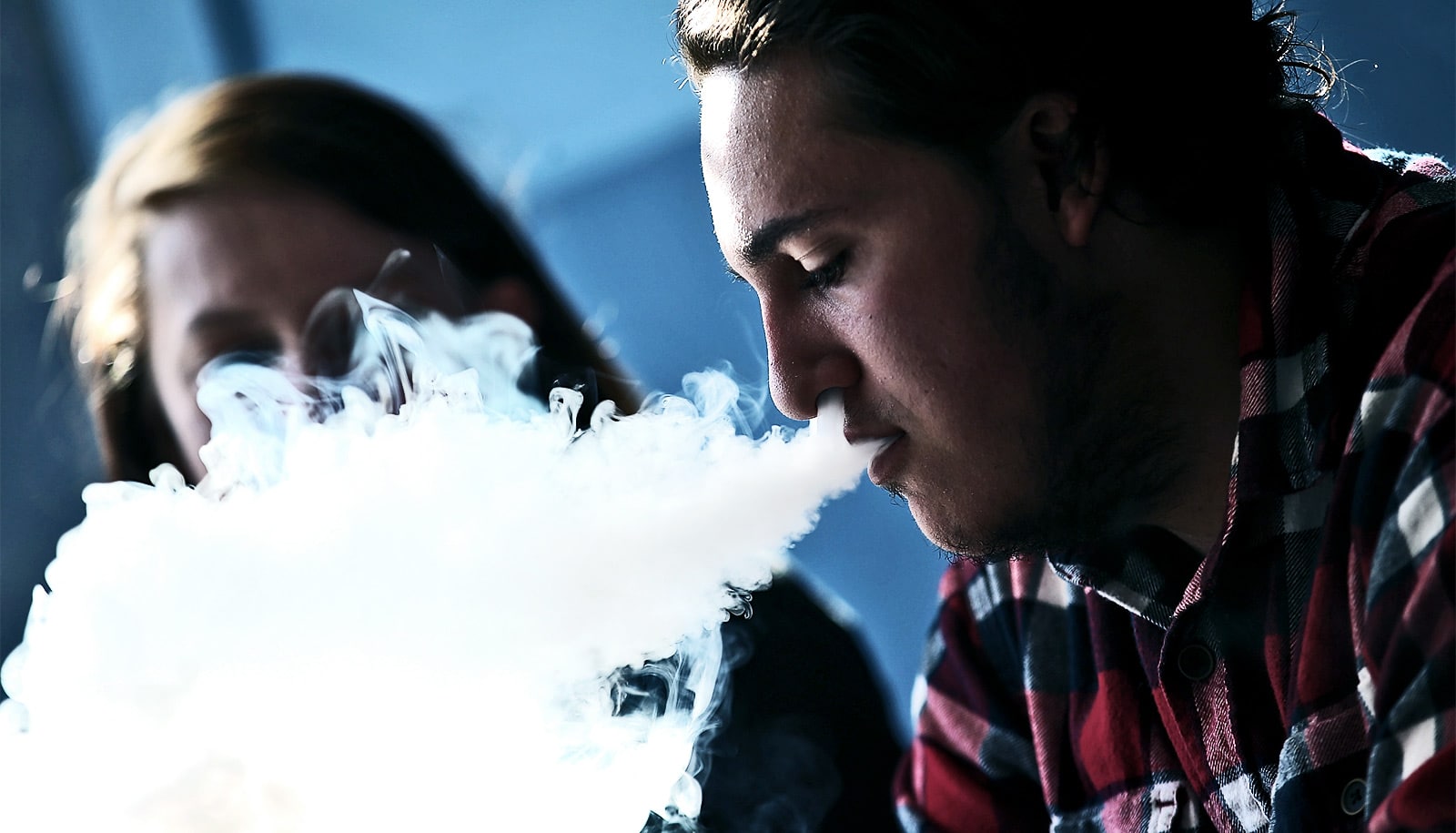New research links vaping and wheezing in adults.
In a new study, people who vaped were nearly twice as likely to struggle with wheezing as people who didn’t regularly use tobacco.
Wheezing, caused by narrowed or abnormal airways, often precedes other serious health conditions such as emphysema, gastro-esophageal reflux disease, heart failure, lung cancer, and sleep apnea.
The findings are consistent with past research that shows emissions from electronic cigarette aerosols and flavorings damage lung cells by generating harmful free radicals and inflammation in lung tissue, says Deborah J. Ossip, professor in the public health sciences department at the University of Rochester Medical Center.
“The take-home message is that electronic cigarettes are not safe when it comes to lung health. The changes we’re seeing with vaping, both in laboratory experiments and studies of people who vape, are consistent with early signs of lung damage, which is very worrisome.”
Health repercussions
Electronic cigarettes are extremely popular in the US. National Center for Health Statistics data indicates that close to 13 percent of US adults have tried electronic cigarettes and nearly 4 percent currently use them.
Although electronic cigarettes are marketed as a less harmful alternative to cigarette smoking, many concerns about the long-term health consequences of vaping remain.
For the study, which appears in Tobacco Control, researchers analyzed data from more than 28,000 US adults who took part in the Population Assessment of Tobacco and Health (PATH) study.
After adjusting for age, gender, race/ethnicity, body mass index, secondhand smoke exposure, and other factors, adult vapers were 1.7 times more likely to experience wheezing and related respiratory symptoms (such as difficulty breathing) compared to non-users.
Lead author Dongmei Li, associate professor in the clinical and translational research department, acknowledges that there are limitations to the study. PATH study data are self-reported, so it’s possible that information collected from participants is subject to recall bias. The analysis can’t prove that vaping causes wheezing; it only identifies an association between the two.
Finally, PATH data does not include information on some important factors that could influence the results, such as participants’ diet and physical activity levels.
Despite these limitations, senior author Irfan Rahman, professor of environmental medicine, says the research clearly identifies another vaping health repercussion.
Worry about kid use
The researchers call the findings particularly concerning, given new Center for Disease Control and Prevention data that shows a dramatic uptick in youth vaping. According to the report, vaping increased by 78 percent among ninth to 12th graders and 48 percent in sixth to eighth graders in 2018.
With the emergence of small, sleek vaping devices like Juuls, used with nicotine pods in hundreds of different flavors (popular flavoring chemicals include fruit, candy, and dessert), Rahman fears the number of young people who vape will continue to grow and that serious health consequences, including allergies, loss of immunity, and subsequent infections will follow.
The Western New York Center for Research on Flavored Tobacco Products, a collaboration between scientists at the Roswell Park Comprehensive Cancer Center in Buffalo and the University of Rochester Medical Center, conducted the research.
The National Cancer Institute of the National Institutes of Health and the Food and Drug Administration Center for Tobacco Products funded the work.
Source: University of Rochester



